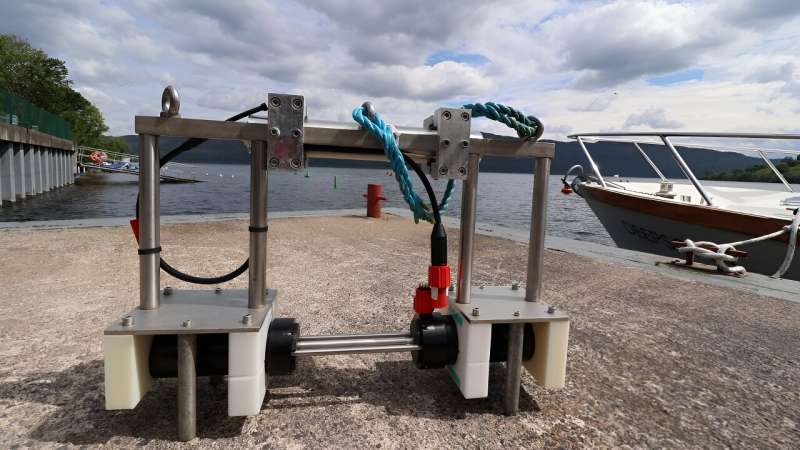This article has been reviewed according to Science X's editorial process and policies. Editors have highlighted the following attributes while ensuring the content's credibility:
fact-checked
trusted source
proofread
Loch Ness life seen through holographic lens

Holographic images of microbial life in Loch Ness have been captured for the first time using the University of Aberdeen's state-of-the-art digital holographic camera.
Engineers from the University teamed up with The Loch Ness Center as part of their drive to uncover more about the world-famous loch and its natural environment.
During the first of a series of expeditions out into the loch, the device captured incredibly detailed images of plankton particles.
Dubbed weeHoloCam, the technology is capable of producing several thousand digital holographic images of microscopic marine organisms in one dive and uses the latest in artificial intelligence techniques to classify the images.
weeHoloCam had never been deployed in freshwater before, and after its initial dive, it captured incredible images of what some have described as "micro-monsters" but are in fact magnified plankton particles.
The team took to the waters onboard the Deepscan vessel, skippered by Alistair Matheson, for the initial trip which was also featured on BBC's The One Show.
Dr. Thangavel Thevar from the University of Aberdeen's School of Engineering said, "This was a unique opportunity for us to deploy the weeHoloCam in fresh water, as it has previously only been used in the ocean.
"We were curious as to what the water quality would be like, especially at lower depths, as we know that too much peat could obstruct the recording path of the instrument. But we lowered the camera to around 200 meters and were able to see lots of interesting particles which, by working with biologists, should be able to give us more information about the biodiversity of Loch Ness."
Emeritus Professor Jon Watson, part of the team of Aberdeen engineers, explained the differences between a traditional camera and a holographic camera.
He said, "A traditional camera has a very short focus and you have to take several photographs at different times to capture a scene. With a hologram, an entire volume is recorded in one shot. It's like lifting a bit of the ocean up and taking it to your laboratory."
Nagina Ishaq, General Manager of The Loch Ness Center, said, "At the center, we present the whole story about Loch Ness—the science and the myths, and as part of that ongoing effort, we want to encourage researchers to come here and to find out more about what is in the Loch, because there is so much we don't know.
"We reached out to Interface to put us in touch with academia. One of the applications was from the University of Aberdeen using the weeHoloCam and it really jumped out at us as something we wanted to pursue. It has been really exciting having the team here and we look forward to working with them further as they study Loch Ness on a microbial level to see what can be learned."

Dr. Andy Starkey, another of the engineers, added, "After we record data from the loch, we take it back into the lab and analyze all of the holograms that we've taken so far to see what animals we can find and then start to classify them, against what we already know.
"We're going to enlist the help of some biologists to help us so they can tell us exactly what they are. That's another reason why it's special—we have pictures of these animals in situ. We haven't killed them and then taken these images. Those animals still live and exist in the loch. So we're going to have examples of these animals for the first time in situ from Loch Ness, which is hugely exciting."
The team of engineers plan to return to Loch Ness later in the year for further deployments of the weeHoloCam.
Provided by University of Aberdeen



















